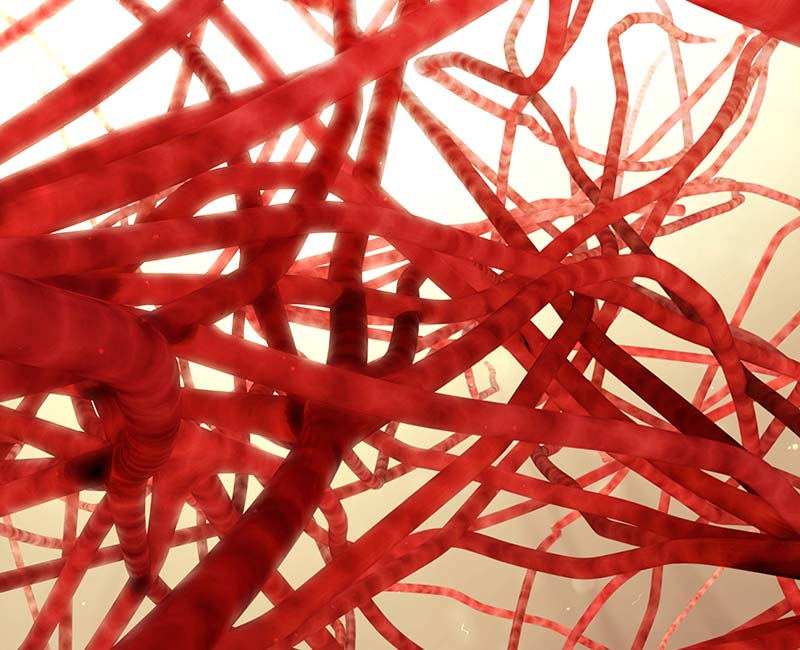Capillaries are delicate blood vessels that deliver nutrients and oxygen to cells throughout your body. They also remove carbon dioxide and other waste from your cells. With their thin walls, capillaries allow fluids and gases to pass through easily. Capillaries connect arteries and veins and help your organs function.
Advertisement
Cleveland Clinic is a non-profit academic medical center. Advertising on our site helps support our mission. We do not endorse non-Cleveland Clinic products or services. Policy

Capillaries are delicate blood vessels (tubes that hold blood) throughout your body. They bring nutrients and oxygen to cells in your organs and body systems. In exchange, they also carry away tissue waste like carbon dioxide.
Advertisement
Cleveland Clinic is a non-profit academic medical center. Advertising on our site helps support our mission. We do not endorse non-Cleveland Clinic products or services. Policy
You can think of it like someone bringing groceries to your door and taking the trash with them as they leave. This happens constantly and in many different places in your body.
Capillaries have three different shapes that help them carry out various functions. Types of capillaries include:
Capillary beds complete the circulatory system by connecting your arteries to your veins. Arteries carry oxygen-rich blood from your heart to your organs. Veins help your body remove low-oxygen blood and waste from your organs.
The role of the capillaries is to function as a place to exchange what arteries and veins carry. While arteries and veins carry gases and nutrients through your body, it’s the capillaries that get them to their destinations.
Advertisement
Capillaries serve a variety of organs and systems. They support your:
Capillaries are nearly everywhere in your body — wherever arteries and veins connect. Capillary beds serve your tissues and organs.
Capillaries are the smallest blood vessels in your vascular system. Researchers have to use a microscope to see capillaries, which are smaller than a human hair. A capillary is about 5 micrometers (a micrometer is 0.001 millimeter) around. It’s so tiny that red blood cells have to go through it lined up one behind the other. Capillaries are less than 1 mm long, or about the size of the tip of a pen.
Capillaries have thin walls (1 micrometer thick) that let nutrients, fluids and gases go in and out.
Capillaries contain two layers of cells:
Broken capillaries are common. Severe coughing or vomiting can cause them. The bleeding from broken capillaries creates little dots of discoloration on your skin (petechiae). These often heal on their own.
Other conditions that affect your capillaries include:
Advertisement
Symptoms of conditions that can affect your capillaries may include:
Tests to check for conditions that affect your capillaries may include:
Treatments for conditions that affect your capillaries may include:
You can take care of your capillaries the same way you care for your other blood vessels. This includes:
You can also work with your healthcare provider to manage conditions that can affect vascular health. These include:
Your provider may detect capillary disease before you experience symptoms. This makes it possible to start treatments to prevent them from getting worse. It’s especially true if you stay current with preventive care, like annual physical exams.
Advertisement
Contact your healthcare provider if you experience signs of vascular disease. These include:
A vein transports blood back to your heart after your cells have taken what they need from it. Veins carry blood that contains waste like carbon dioxide. A capillary is like an exchange center where things your cells need move toward them and the things your cells throw out move away from them.
When you think about blood vessels moving blood through your body, it’s easy to forget about the smallest of these — capillaries. But they’re the ones that get things where they need to go. Like other parts of your body, they can develop issues. Keeping your vascular system working well with physical activity and nutritious foods can help your capillaries, too.
Advertisement
Cleveland Clinic’s primary care providers offer lifelong medical care. From sinus infections and high blood pressure to preventive screening, we’re here for you.

Last reviewed on 12/03/2024.
Learn more about the Health Library and our editorial process.